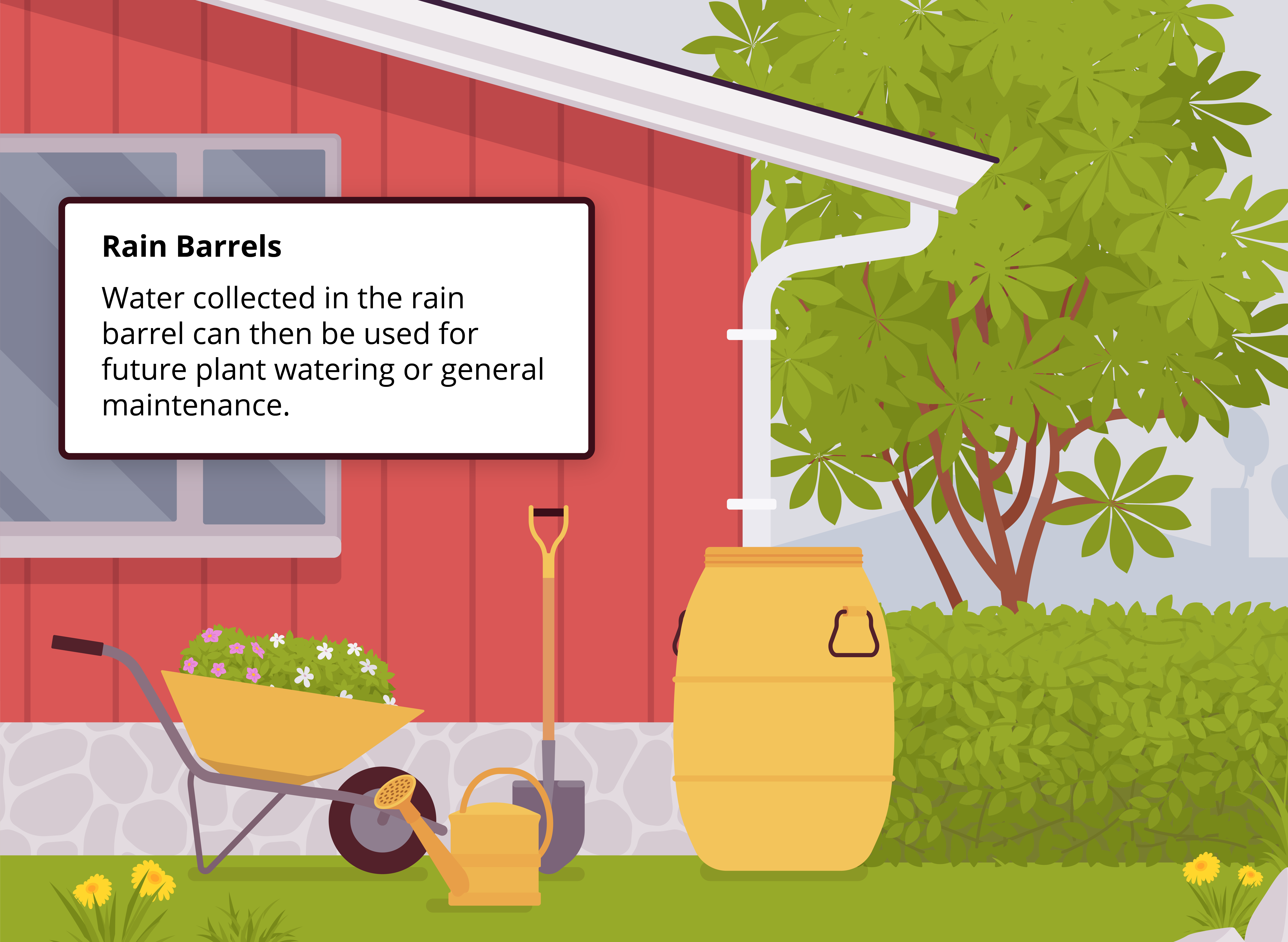How Green Infrastructure is Making a Difference
July 22, 2022
What’s the Problem With Stormwater?
Stormwater is normally absorbed and filtered by soil and plants it comes in contact with. These surfaces are considered pervious, or having the ability to let water pass through. In more developed areas, stormwater has fewer pervious surfaces to absorb into. This causes stormwater to collect along roads, sidewalks and buildings. These surfaces are considered impervious, or unable to let water pass through. As the stormwater moves on top of these surfaces, it can collect pollutants such as oil, sediment and debris.
This is when stormwater becomes an issue. According to 3 Rivers Wet Weather, it only takes one-tenth of an inch of rain to overwhelm storm drains in the city of Pittsburgh. The average rainfall in Pittsburgh is about one-quarter of an inch.
When stormwater doesn’t have anywhere to go, it can:
- Pollute water supplies
- Disturb local habitats
- Flood properties and roads
- Erode the landscape
How Does Green Infrastructure Keep Waterways Clean?
Green infrastructure works to absorb stormwater and prevent it from creating issues with waterways, habitats and local properties. It’s able to do this by creating pervious space. It can also act as a filter by blocking debris. Some examples of green infrastructure include rain gardens, bioswales and pervious pavement.One example of green infrastructure within Allegheny County is the Monroeville Public Library. This space often flooded whenever it rained. To remedy this, pervious pavement for the parking lot, a rain garden and adjusted drainage systems were implemented.
An upcoming green infrastructure project is the Findlay Township Activity Center where two rain gardens will be planted.
How Can You Implement Green Infrastructure?
If you’re interested in implementing green infrastructure on your property, rain gardens or rainwater retention are options to consider. Local regulations may vary, so remember to check before beginning a project like this.

Rain Gardens and Bioswales
- Rain gardens are often placed in a space lower than the rest of the lawn to absorb stormwater runoff.
- Bioswales are similar to rain gardens but are used to redirect stormwater rather than absorb it. This can be done through rocks or mulch that lead to the garden or another outlet.

Rainwater Retention
- Rainwater retention is when rainwater is collected so that it may be used in the future.
- Rain barrels are one example. These collect rainwater from a building’s roof during rain events and can be angled below a gutter to collect the water.
References
About the Wet Weather Issue.” 3 Rivers Wet Weather, http://www.3riverswetweather.org/about-wet-weather-issue.
Pittsburgh Unifies its Approach to Updating Stormwater Management” US Climate Resilience Toolkit, 24 February 2021, https://toolkit.climate.gov/case-studies/pittsburgh-unifies-its-approach-updating-stormwater-management.
Rain Gardens and Bioswales.” USU Extension, https://extension.usu.edu/waterquality/urbanstormwater/green-infrastructure/rain-gardens-and-bioswales.
Soak Up the Rain: Rain Barrels | US EPA.” US Environmental Protection Agency, https://www.epa.gov/soakuptherain/soak-rain-rain-barrels.
Why is Stormwater a Problem? | ddoe.” DOEE.DC.Gov., https://doee.dc.gov/service/why-stormwater-problem.
Next Post
August 11, 2022